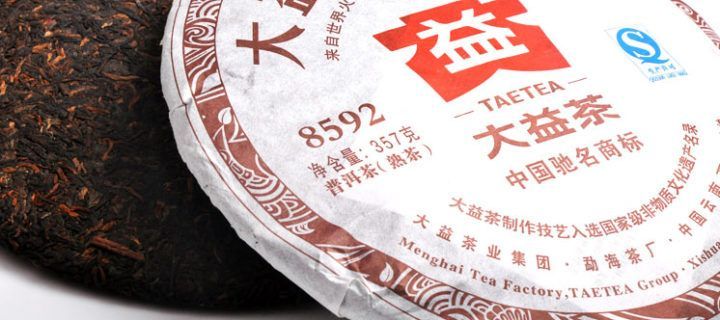Read the Puer label: what do the numbers mean?
| I'm sure you've often come across chocolate pancakes with four digits on the packaging among the hieroglyphs. What do they mean? Read more about this in this article! |
The numbers on the packaging of Puer indicate what factory it was produced in, in what year it was produced and from what raw materials. Even without knowing Chinese, you can understand what Puer is in front of you. However, not all puers have numbers — only the pancakes of state-owned factories.
Let's Analyze the packaging on the example of this pancake:

The first two digits are the year of the recipe (1985-Puer in the picture, that is, this recipe was first developed in 1985. Please note that this is not the age of the Puer.)
| What does this knowledge give? Puer recipe — certain proportions of mixing different regions/grades/types of leaves to produce a characteristic, stable and recognizable taste. To some extent, this guarantees that Puer from the same factory, released according to the same recipe in 2008 and 2010, will taste more or less the same. Over the years, new recipes appear, some disappear, but especially successful ones continue to be used. |
The third digit is the grade of the leaf (from small to large, the figure 9 in the picture shows that we are waiting for a fairly large leaf with all the consequences that follow in terms of taste.)
The fourth digit is the factory code (in the picture it is number 2-Puer was produced at the Menghai tea factory.)
|
Factory codes: 1-Kunmin Tea Factory 2-menghai Factory 3-Xiaguan Factory 4-Feng Qing Factory 5-Puer Tea Factory (Now Puer Tea group Co. Ltd) 6-Factory "Six Great Tea Mountains" & nbsp; 8-heiwan Factory 9-Lange Factory |
Grade of tea leaf
Grade of most Puer is indicated by a number from 1 to 10 (1 grade is the highest). The higher the grade (and the smaller the number), the more tea buds and fewer cuttings, the smaller and more tender the leaf.
Special varieties of Puer (sometimes spelled in the name of Puer):
- Gong ting-Palace or Imperial PU'er (very small, young and tender leaf)
- Lao Shu-Puer from the leaves of old trees
- Jin Ya — Jin Hao) - Golden buds (Golden villi). This indicates a large proportion of tea buds in the recipe.
- Lao Cha Tou-Old Tea Heads, PU'er in lumps
Classes (sometimes spelled in the name of Puer):
- Te JI-Top grade
- Jia JI — a-class
Year of production and batch number:
Also on some "prescription" Puer there are three additional numbers that are on the label separately.
The first digit is the year of manufacture of this puerh, and the next is the ordinal number of the party this year, which helps to know exactly when the raw material was collected first gathering or tenth on account (first, of course, the best). In the picture you can see the code 701, that is, Puer was produced in 2007 from raw materials of the first collection.
Now you can learn a lot about PU'er from an incomprehensible set of numbers, even if you don't understand Chinese:)
- Comments
